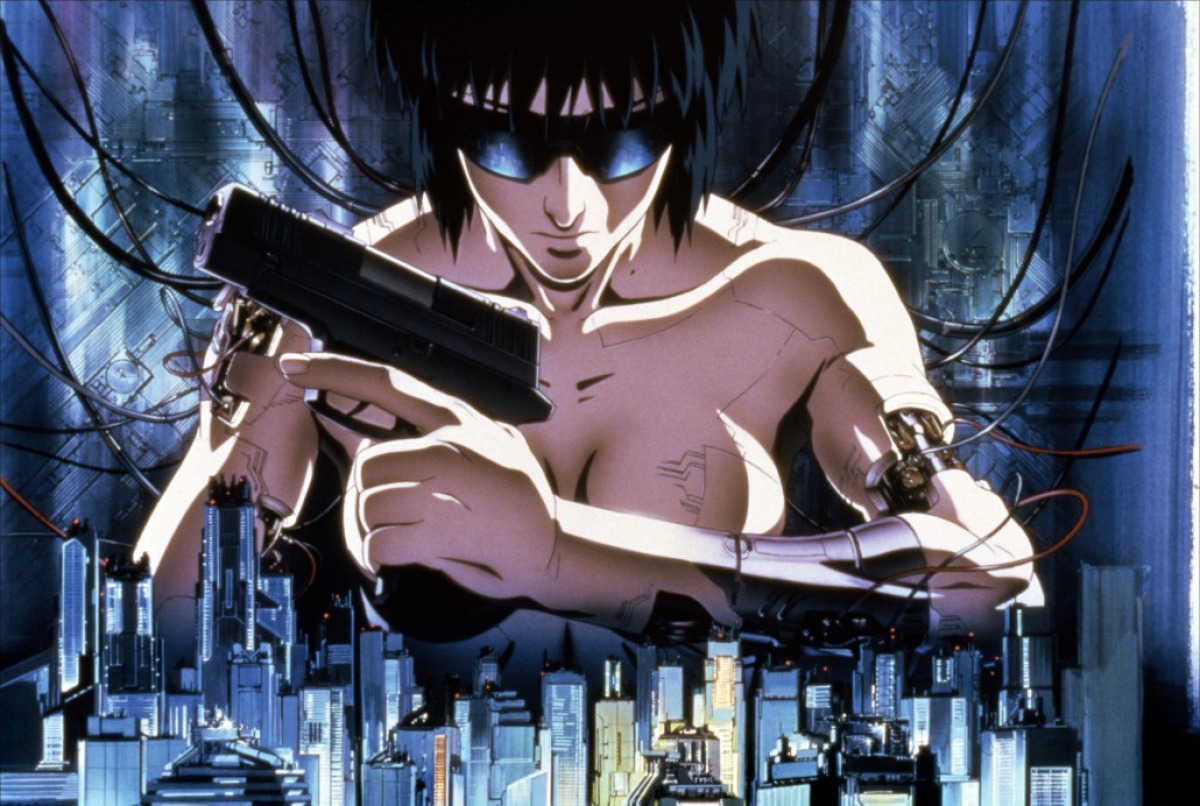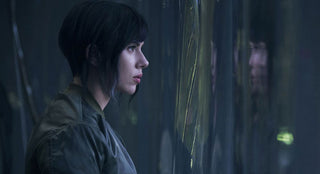In 1995 Mamoru Oshii gave the world the first Ghost in the Shell film. The film, an animated adaptation of Masamune Shirow’s manga of the same name, won over fans and critics alike with its seamless blend of traditional animation and CGI, technology-based philosophical material, and dystopian cyberpunk action. It’s widely regarded as one of the best anime films of all time. The film’s success took the franchise mainstream as more movies and anime series spawned over the years. It’s now one of the more popular and recognizable anime stories of our time. Its sci-fi and cyberpunk influence is felt to this day as it’s inspired films like The Matrix, Avatar, and Ex Machina, among (many, many) others. Hollywood has now adapted that original material and is releasing a silver screen version in March of next year. The 2017 movie has been met with excitement and hesitation—excitement seeing that a big time Hollywood production is taking a chance on popular Japanese material, and hesitation due to controversy around the casting of Scarlett Johansson as the lead character. I’m here to tell you why you shouldn’t worry about the casting controversy and why you should be hyped for this flick.
It’s almost 2017 and we live on a planet full of devices that make our lives easier, more convenient, and more shareable. In this world of great technological advancement and almost nausea-inducing convenience, one of our greatest fears is that someone can utilize technology to steal our identity. We’re afraid, and for good reason, that someone can get on the internet and find out everything about us—our address, phone number, credit card info, legal information, etc. and use that information to take something from us. Usually the worst or most damaging thing that’s taken is money, but imagine if someone could take something more personal. Imagine it’s the year 2029 and we live in a world in which we’ve become much more connected to our technology, literally. We’re so connected we’re made of our technology. We’re actually living, breathing technology that is part-human and part-machine. Now imagine that the things most personal to us—our memories, our personalities, our lives—are things that can be taken and tampered with like computer data. The world you’re now imagining is the world of Ghost in The Shell.
Imagine it’s the year 2029… we’re so connected [to technology] we’re made of [it].
The main character in Ghost in the Shell is a woman named Motoko Kusunagi. She’s a part-human, part-cyborg agent in a counter-cyberterrorist group called Section 9. After the announcement that Scarlett Johansson would play this character, fans of the franchise—mostly American fans, if you’re paying attention to articles and comments across the web—were disheartened to see what they considered another case of “whitewashing” in Hollywood. Casting Scarlett Johansson as a character named Motoko Kusunagi sounds problematic, but here’s how the creative team (seemingly) avoided the name issue in particular: the character in the 2017 movie is simply known as “The Major.” “The Major” or just “Major” is Kusunagi’s nickname, which is used in every iteration of the franchise. Her name may be Motoko Kusunagi, which looks and sounds Japanese, but her body is a machine produced in a factory. Hell, it’s the year 2029 (in the original movie) and there’s been two world wars (after our original two), so the idea that something is “Japanese” may not mean the same thing. The setting of the movie is a distant future, or at least it was in 1995, so the idea that everything will be as it is now is silly. Changing a name seems like a cheap trick, especially for a character who’s so beloved to the world of anime, but a quick and simple name change isn’t the only thing that fights for the case against casting controversy.
You see, the main theme of Ghost in the Shell is identity—and footage from the trailer shows us that identity is clearly a focal point in the film. The story explores the idea of how human beings define humanity and hold onto their sense of self when their body isn’t their own. Major is heard saying, “Everyone around me, they feel connected to something, connected to something I’m not.” She’s told that she’s the first of her kind. Another character asks her, “What are you?” In the world of GITS, some people’s spirit and/or life force (their “ghost”) is transferred into a cyborg body (their “shell”). Some are completely machine, others are part machine, some aren’t machine at all, but have machine parts.
The Major falls into the category of completely machine (except for her “spirit” or “ghost”), and because of this she battles the concept that her memories or even her life may not be her own. They may be made up or they may be someone else’s. This idea of people’s life force being transferred into machines eases the notion that The Major has to be played by an Asian actress. Her body is literally a machine with no ethnicity or nationality attached. The “shell” is an interchangeable machine and has nothing to do with the personality, memories, or spirit within besides containing it. The body could be technically be anybody as long as the ghost is inside and intact. We see an example of that in the end of the original film where The Major’s body is destroyed and to save her Batou transfers her ghost into a “child model” shell. She’s still The Major, but she’s in the body of a young girl. So the precedent exists for her to NOT BE who or what we think of her.
We know Scarlett can handle sincerity and action, her career has proven that. ScarJo’s casting has been the point of contention for many Ghost in the Shell fans and movie fans alike. Her acting ability or her ability to play an action heroine isn’t the problem. Johansson is an award winning actress. She got a BAFTA for her role in Lost in Translation. In the last handful of years she’s also become an action-centric actress playing lead roles in Lucy and The Avengers, both of which were box office hits. She can be heartfelt, she can kick ass, and her name makes money. I believe in Scarlett as an actress and action star, but so does everyone else (I think). Mamoru Oshii, director of the 1995 animated film, praised Scarlett’s performance after seeing her in action on set. “[Scarlett] has gone above and beyond my expectations for the role”, he stated in a behind the scenes featurette. I don’t think we need to worry about Johansson as The Major.

With a full trailer and some behind the scenes features now online, fans and haters alike are getting to see glimpses of what the movie could have in store. The footage revealed seems to draw heavily from GITS material of the past. Mind you, the trailer is barely over two minutes long. There’s not much to speculate on, but there’s plenty to be hyped about. The world looks technologically lush and vibrant with giant holograms, neon advertisements, and colorful civilians. But under that sheen and glow there’s a seedy atmosphere of dilapidated buildings and grey skies. The setting looks like Blade Runner on acid (IDK if that’s the best psychedelic to compare with—I’m straight edge), and that’s saying something. Major Kusunagi’s “shelling” scene in particular, the sequence in which her “ghost” is placed in its “shell, looks fresh out of the 1995 anime film. I for one appreciate the cast and crew sticking to the roots while also building off of and around past material.
In a featurette circling the web, director Rupert Sanders says, “We’ve created a world people haven’t seen before.” We’ve seen this world on page in the manga and on the small screen in various anime runs, but it’s definitely exciting to see it coming to life with a new vision on the big screen. Major’s thermoptic suit, Batou’s eyes, and a tricked out Delorean show respect for the roots while adding to new elements to the style. The visuals shown in the trailer showed an appreciation of the source material and gave me nothing but high hopes for the film.
The “whitewashing” argument doesn’t hold a lot of water here, and Scarlett seems great for the role. On top of that there is a truly diverse cast, respect for the material, and a co-sign from one of the original creators. Ghost in the Shell got off on the wrong foot with the internet jumping the gun on the controversy, but one trailer in and I’m all aboard the hype train for this movie. The inspiration from and respect/dedication to the source material is there in the visuals, the action and the story. Let’s hope it all comes together. I remember leaving the theater after The Matrix and wondering if the world I lived in was real. If Ghost in the Shell has me questioning who or what I am (more so than usual) then I’ll consider it a success.
***

